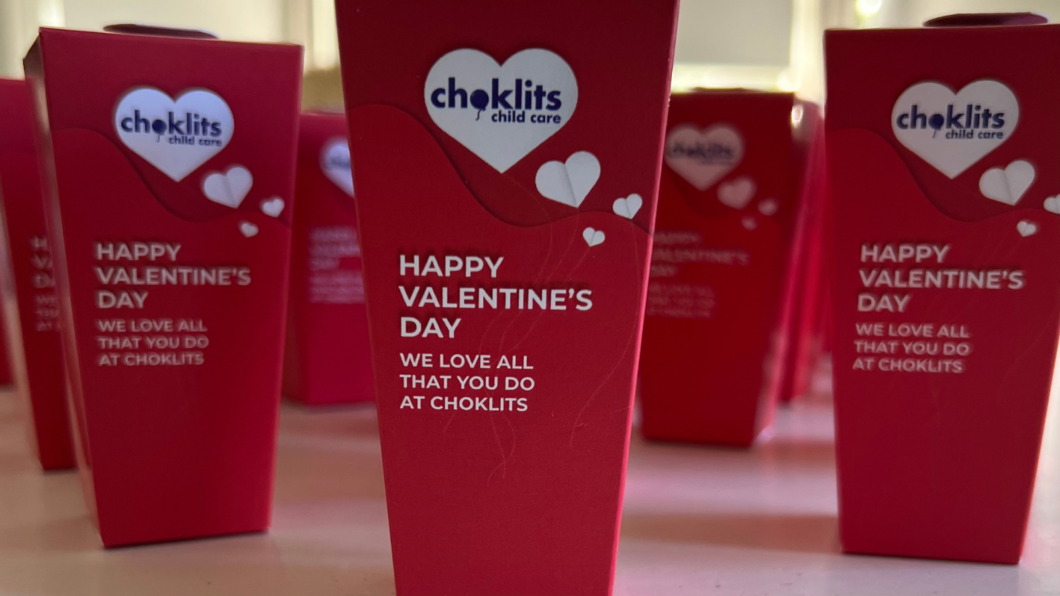How to make Valentine’s Day special for children under five years old
Valentine’s Day is a special occasion that is celebrated worldwide. It’s a day to express love, appreciation and affection towards those who are close to our hearts. This day is not only for couples, but for families, friends and loved ones of all ages. Children under five years old can also participate in Valentine’s Day and make it a special and memorable occasion which is exactly why we’ll have lots happening at Choklits Child Care this Valentine’s Day and be taking full advantage of the learning opportunity!
It’s no secret that children love to play and Valentine’s Day activities are an excellent way to promote learning, development and creativity for young children. These activities can relate to the Early Years Learning Framework (EYLF), which is a guide that outlines the key principles and practices for early childhood education in Australia.
The EYLF focuses on play-based learning and provides a holistic approach to the development of young children. It recognises that play is a crucial aspect of children’s learning and development, and provides opportunities for children to explore, create, imagine, and express their thoughts and feelings.
Here are some Valentine’s Day activities that children under five years old can participate in, which align with the principles and practices of the EYLF:
- Craft activities are a great way to encourage creativity and imagination in young children. Children can make their own Valentine’s Day cards, decorations, and gifts for their loved ones. These activities can be as simple or as elaborate as desired, and can involve a variety of materials such as paper, cardboard, markers, stickers, and glue.
- Cooking and baking activities are a fun way for children to develop their fine motor skills and learn about healthy eating habits. Children can help make Valentine’s Day treats, such as cookies, cakes, and cupcakes, and decorate them with heart-shaped toppings and sprinkles.
- Sensory play is a great way for children to explore their sense of touch, smell, sight, and taste. Children can create their own Valentine’s Day sensory bin, filled with heart-shaped items such as pom-poms, foam hearts, and other soft, squishy materials. They can also create their own Valentine’s Day playdough, using ingredients such as flour, salt, and food colouring.
- Music and movement activities are a fun way for children to develop their gross motor skills and coordination. Children can dance to their favourite love songs and play musical instruments, such as tambourines, maracas, and drums. They can also create their own musical instruments, such as shakers and drums, using materials such as paper, cardboard, and rubber bands.
- Role-playing activities are a great way for children to develop their social and emotional skills, and to express their feelings and thoughts. Children can act out different scenarios related to Valentine’s Day, such as making a gift for someone they love, or going on a picnic with their family or friends.
In conclusion, Valentine’s Day is a special occasion that can provide children under five years old with opportunities to participate, learn, and develop through play-based activities. The EYLF provides a framework for early childhood education that aligns with the principles and practices of play-based learning, and provides a holistic approach to the development of young children. By participating in these Valentine’s Day activities, children can explore their creativity, imagination, and social and emotional skills, and make the occasion a memorable and special one.
Blog post was written by Choklits Educator and Chokliteers author Dee Wasserfall



